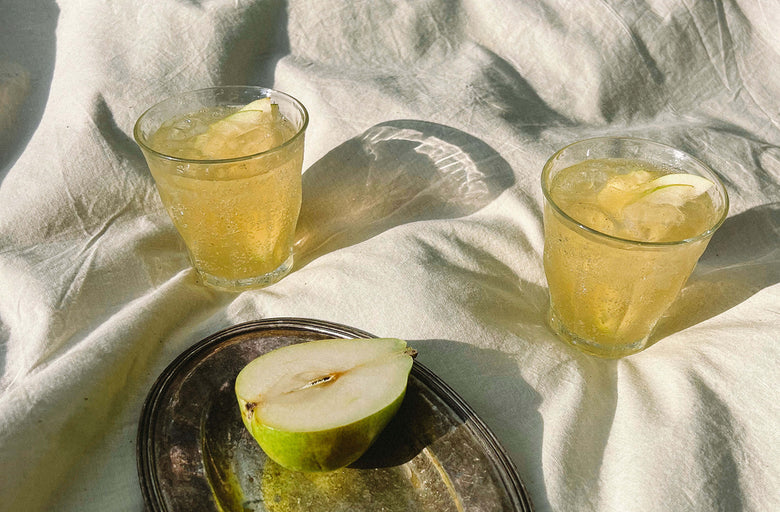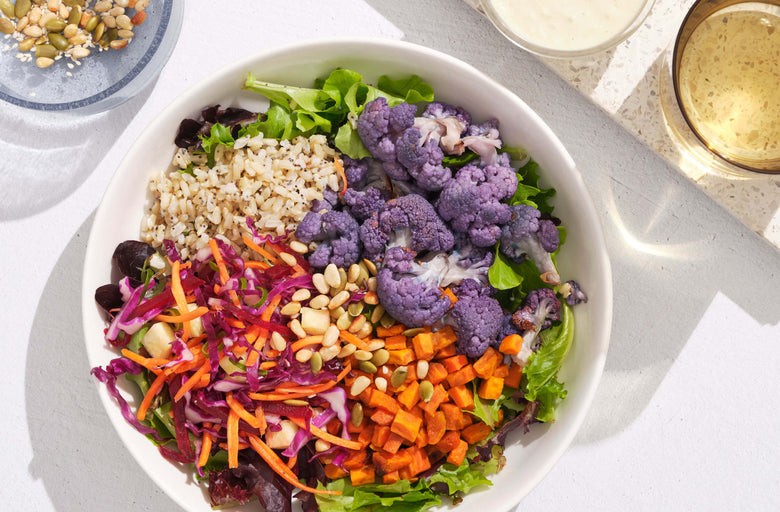Spring reminds us to revere nature. The birds are singing more boisterously than ever, and the bees are hard at work pollinating flora and fauna all over Earth, making sweet honey.
Honey originates from flower nectar collected by bees. It is broken down into simple sugars after moving to the honeycomb. The hexagonal prism shape of the comb, mixed with the constant fanning of bees’ wings causes evaporation, transforming the nectar into liquid ambrosia.
While sugary sweet things are often snubbed by the wellness set, honey is a distinct exception because of its powerful medicinal uses. Celebrated in Traditional Chinese Medicine and Ayurveda and used for millennia by the Greeks and Egyptians, it can ease digestion when added to herbal tea and act as a potent antibacterial. Packed with minerals, this sticky gold is a welcome addition inside your pantry and atop your vanity. Particularly, Manuka honey is a varietal that true skincare aficionados turn to for a dewy, vital glow.
The Magic of Manuka
Sourced from New Zealand, this honey is made by bees that feed on bright pink and white Manuka shrubs. All honey is most potent when left raw and unpasteurized, but Manuka honey stands out for its high antibacterial activity and anti-inflammatory properties. It’s rich with antioxidants and vitamins B and C, amino acids, and live enzymes. It also has four times the mineral content of your average flower honey: zinc, copper, iron, potassium, and selenium, specifically. When applied to the derma, your largest organ, the bacteria that live on your skin feast on Manuka’s life-giving nutrients.
Like any skincare routine worth its weight in gold, it tones, exfoliates, and moisturizes. Two properties in Manuka that regulate pH and fight breakouts are hydrogen peroxide and methylglyoxal (MGO). MGO is a compound found in other types of honey, as well as coffee and cocoa, but only in small doses. In Manuka, the MGO ratings can be in the hundreds, which translates to potent antibacterial effects. As a natural emollient and exfoliant, it absorbs moisture from the air and draws it to the skin's surface. It softens and brightens the complexion, while evening out skin tone, and aids in fading acne scars. While it improves texture and hydrates parched skin, it’s also an enjoyable, sensual experience to slather on. The sticky texture. The dark color. The saccharine aroma. Nourish your skin on the outside, while also being intentional and loving on the inside, an important step in the skin-healing process.
Like any skincare routine worth its weight in gold, it tones, exfoliates, and moisturizes.
A Golden Self-Care Ritual
To reap all the sweet benefits—think plump, glowing, juicy skin—add Manuka honey to your skincare routine at least three times a week. Start with a clean face and apply a thin layer, morning or night. To activate the hydrogen peroxide, your skin should be slightly damp. Leave the honey on for 20-30 minutes. You may experience some purging (in the form of breakouts) as the honey kills surface-level bacteria and deep cleans pores.
Note: When buying Manuka honey, look for an MGO (methylglyoxal) rating of 400 or higher. The higher the rating number, the more antibacterial milligrams of MGO are bioavailable for skin. You may also see UMF listed; this stands for “unique Manuka factor,” and is another way to rate the potency. A UMF rating of 20+ is a good place to start for optimal skin health.
More Skin Healing Secrets
A Love Letter to Apple Cider Vinegar






